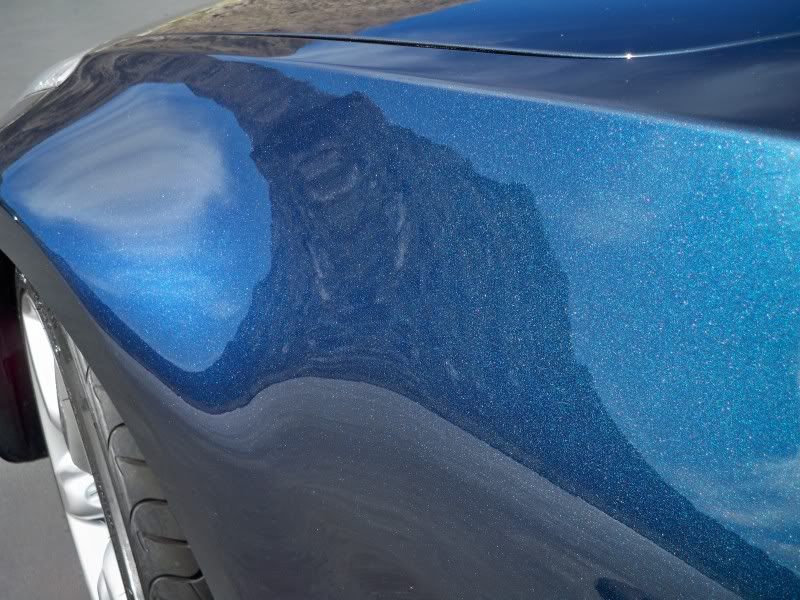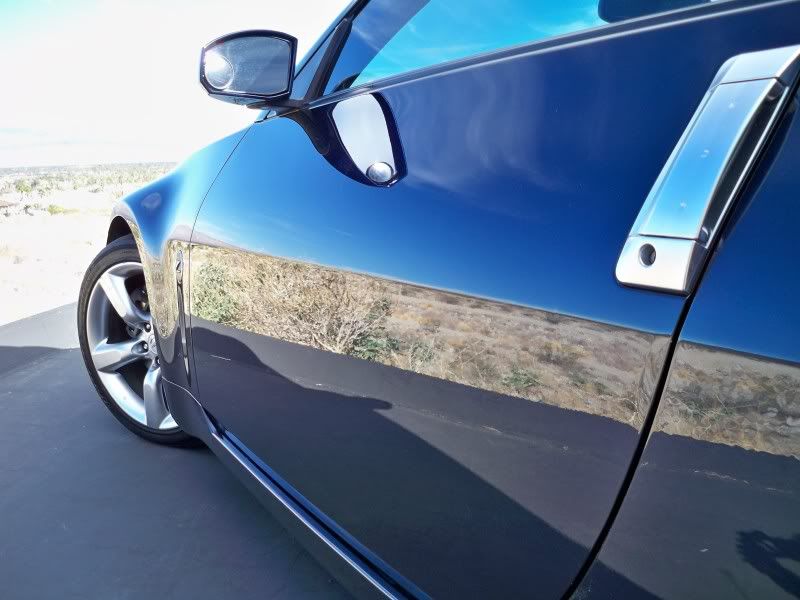First... in my entire life I've NEVER claimed to be the
fastest at this craft. I'll leave that claim up to someone else. And this is because you cannot
rush quality and removing swirls and scratches, that is "below surface defects" takes a certain amount of
time.
That is, you have to move the polisher slowly over the surface to allow the combination of,
- Abrasive technology
- Pad technology
- Downward Pressure
- Time - Arm Speed
- Tool action - This is usually a combination of rotation and oscillation but could be just rotation.
- Technique
You need to allow the above things the time to
"affect" the surface. By the word "affect", I mean abrade it in a way that removes defects while leaving both a nice looking finish behind and the most amount of paint as is possible.
The longest step in an exterior buff-out is the first machine step, in my how-to book I call it,
The Major Correction Step
Because that's what it is no matter what the tool, pad or product. The first step when working on a neglected finish is the major step and thus the Major Correction Step. (Had to give it a name).
If you don't remove the defects during this first step then chances are very good they will be their after the final wipe off of your LSP.
Deeper defects not removed during the major correction step are not likely going to be removed when you move onto the next step where you're now using less aggressive pads, products and even tools and technique.
So the end results, that is the BIG Picture, is determined during this crucial, first correction step and for this reason you cannot rush it.
All of the above said, for a car like you see in the above pictures, not including all the prep work you do before bringing the buffer down onto the paint, things like washing, claying, taping off, etc. to use a dual action polisher like a Porter Cable or variants, it's going to take a person that knows what they are doing a range of 3-6 hours.
The range of time is affected by the pad and product. With the Meguiar's Microfiber Cutting pad and their D300, a person can can knock out the correction step pretty quickly but I'd say 3 hours for the 350Z would still be pushing it and 4 hours minimum would be a better baseline.
The next step of course goes a lot faster because now you're not locked into doing as much work to each section you buffer out as the heavy lifting, so to speak is over.
So say you spent 4 hours on the first step, and 2 hours on the second step, and then applied a dedicated product for your last step, be it a wax, sealant or coating, you're looking at approximately 7 to 8 hours by the time you're making the final wipe down of the paint. And this time allotment does not count the other procedures like washing, drying, claying, taping-off, etc.
The above is doing a multiple-step process with the additional LSP application and removal.
With the Meguiar's Microfiber DA Correction System, you actually stop and are finished after the second step, that is using the D301. In this scenario you're looking at 5-6 hours for a two-step process over the average size passenger car.
NOTE: A person can do it faster but realistically, if you start buffing out sections faster you're not going to get as good of defect removal AND that's okay for doing production detailing. What i typed above would be more for the guy that actually owns the car he's working on and wants to do a good job.









